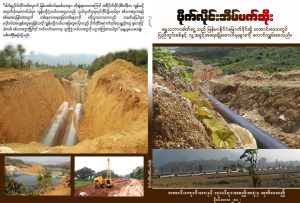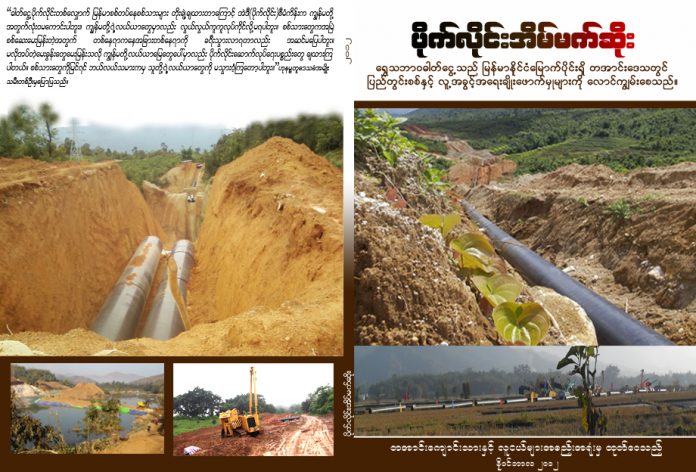Ye` Mon – The Ta’ang Students and Youth Organization (TSYO) released its report “Pipeline Nightmare” on November 7 depicting how the Shwe Gas and Oil pipeline project has forced thousands of ethnic Palaung villagers to flee their homes.
The report claims that the government expanded 26 nearby military camps to increase pressure on armed ethnic groups and safeguard the pipeline area and its Chinese workers during construction. Clashes between the armed groups and the government army frequently triggered the villagers’ displacement.
 The gas and oil pipeline passes through the Palaung region where government troops, the Kachin Independence Army (KIA), Shan State Army – North (SSA-N), and Ta’ang National Liberation Army (TNLA) are regularly active. The entire route traverses 21 townships from the Bay of Bengal in Burma’s western Arakan State to China’s southwestern Yunnan Province.
The gas and oil pipeline passes through the Palaung region where government troops, the Kachin Independence Army (KIA), Shan State Army – North (SSA-N), and Ta’ang National Liberation Army (TNLA) are regularly active. The entire route traverses 21 townships from the Bay of Bengal in Burma’s western Arakan State to China’s southwestern Yunnan Province.
“There are over a thousand locals remaining in makeshift camps in the Mantong area. According to our latest data collection, there are also about 3,000 IDPs [internally displaced people] in the Kutkaung area. But that is not included in this report,” said TSYO general secretary Mai Aung Ko.
The project has reportedly resulted in a range of severe human rights abuses, including land seizure, forced labor, forced porter duty, torture, and sexual violence.
According to the report, although project authorities maintain that compensation is provided in cases of land confiscation, only a small number of displaced villagers received full compensation, while others were given nothing at all.
“Only those who live close to army families and can speak Chinese are compensated, but still not a lot,” said Mai Aung Ko.
The project’s A1 and A3 blocks are estimated to hold 4.5 – 7.7 trillion cubic meters, and once completed, the project is projected to earn the Burmese government USD 29 billion from sales to China over the next three decades, according to the Shwe Gas Movement Group.
The report is based on field research conducted from October to December 2010, May to July 2011, and January to March 2012. Interviews were held with 53 Palaung villagers from six townships, namely Naung Cho, Kyauk Mae, Thi Paw, Namtu, Mantong, and Namkham in Ta’ang (Palaung) region, according to Mai Aung Ko.
The TSYO report stated that in Shan State of northern Burma alone, 65 to 70 percent of the project is completed, and the entire project is scheduled to conclude in December 2013.

